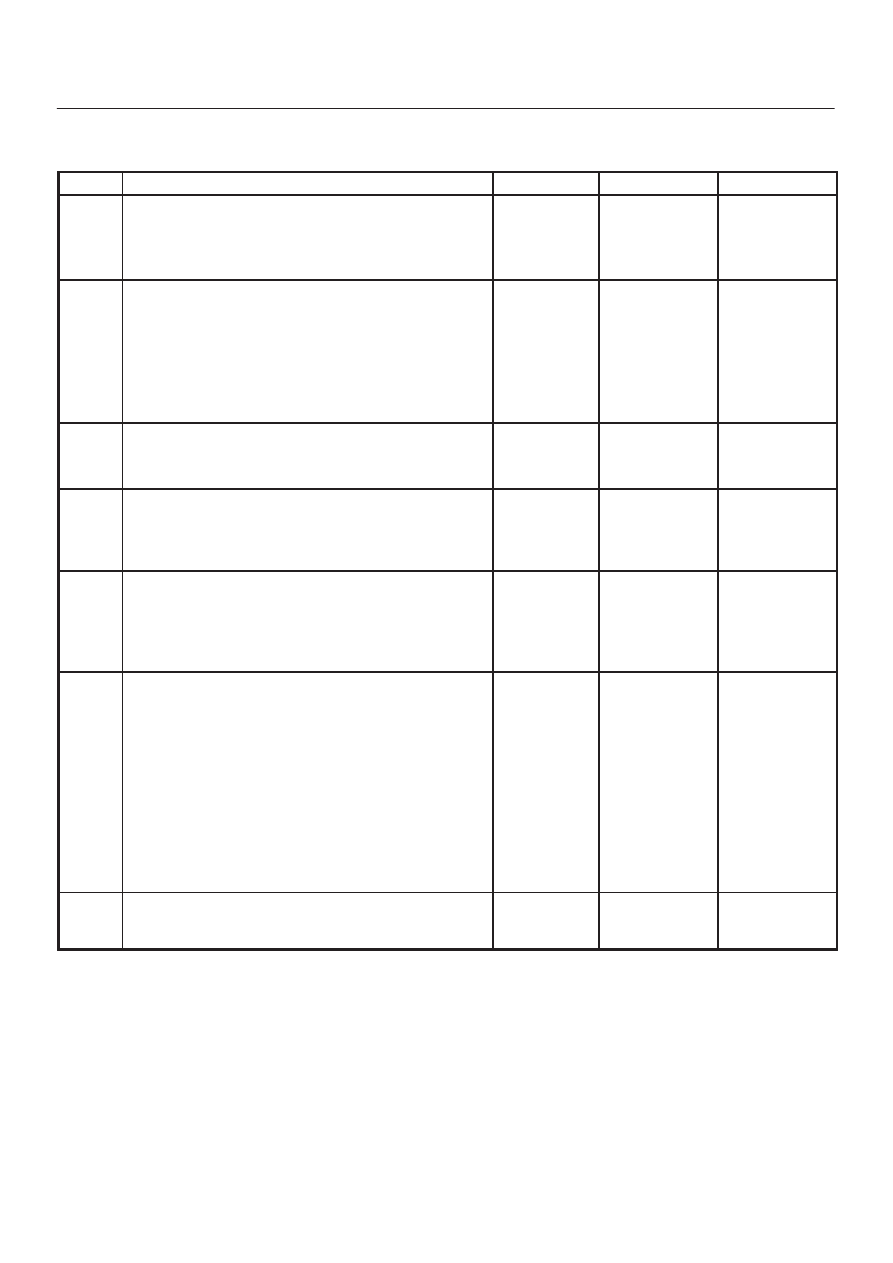Opel Frontera UBS. Manual - part 514

6E–186
4JX1–TC ENGINE DRIVEABILITY AND EMISSIONS
Poor Fuel Economy Symptom
(Cont'd)
Step
No
Yes
Value(s)
Action
11
1. Check the TCC operation. Refer to
Transmission
Diagnosis.
2. If a problem is found, repair as necessary.
Was a problem found?
—
Verify repair
Go to
Step 12
12
1. Check the exhaust system for possible restriction:
D
Inspect the exhaust system for damaged or
collapsed pipes.
D
Inspect the muffler for heat distress or possible
internal failure.
2. If a problem is found, repair as necessary.
Was a problem found?
—
Verify repair
Go to
Step 13
13
Check for proper calibration of the speedometer.
Does the speed indicated on the speedometer closely
match the vehicle speed displayed on the Tech 2?
—
Go to
Step 15
Go to
Step 14
14
Diagnose and repair an inaccurate speedometer
condition as necessary. Refer to
Vehicle Speed
Sensor in Electrical Diagnosis.
Was a problem found?
—
Verify repair
—
15
1. Check the air intake system and the crankcase for
air leaks. Refer to
Air Intake System and
Crankcase Ventilation System.
2. If a problem is found, repair as necessary.
Was a problem found?
—
Verify repair
Go to
Step 16
16
1. Review all diagnostic procedures within this table.
2. When all procedures have been completed and no
malfunctions have been found, review/inspect the
following:
D
Visual/physical inspection
D
Tech 2 data
D
Freeze Frame data/Failure Records buffer
D
All connections within a suspected circuit
and/or system.
3. If a problem is found, repair as necessary.
Was a problem found?
—
Verify repair
Go to
Step 17
17
Perform the procedure in
Injector Test.
Was the fuel pressure normal?
—
Contact
Technical
Assistance
Verify repair